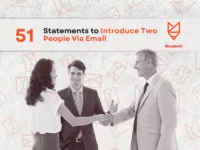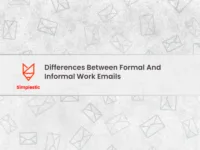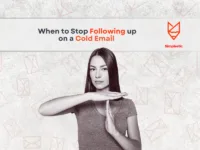In today’s digital-first world, knowing how to email someone for the first time in a professional setting is an essential skill. Whether you’re reaching out to a potential employer, a new client, or a colleague in another department, your first email sets the tone for your relationship. According to a study by Statista, over 347 billion emails are sent daily, and business emails make up a significant portion of that number. With crowded inboxes and busy schedules, making a strong first impression is more important than ever.
But what exactly makes an introductory email effective? How can you ensure your message is not only read but also elicits a positive response? In this comprehensive guide, you’ll learn actionable strategies, real-world examples, and best practices to master professional email introductions.
Why Your First Professional Email Matters
The first email you send can open doors—or close them. In professional environments, your email may be the only impression you make. A well-crafted message demonstrates respect, attention to detail, and genuine interest. Conversely, a poorly written email can signal carelessness or lack of professionalism.
Consider these real-world scenarios:
- A job seeker emailing a hiring manager about an open position.
- A freelancer pitching services to a potential client.
- A student reaching out to a professor for mentorship.
- A business owner introducing themselves to a supplier.
In each case, the first email is your digital handshake. Getting it right can lead to new opportunities, collaborations, and lasting relationships.
Key Elements of a Professional First Email
Before you hit “send,” ensure your email includes these essential components:
1. A Clear, Relevant Subject Line
The subject line is your first impression. Make it concise, informative, and specific. Avoid vague phrases like “Hello” or “Question.” Instead, use lines like:
- “Introduction – [Your Name] from [Your Company]”
- “Inquiry Regarding [Specific Topic]”
- “Request for Meeting: [Your Name]”
2. A Proper Greeting
Use a formal salutation unless you know the recipient prefers otherwise. “Dear [Name]” or “Hello [Name]” are safe bets. If you’re unsure about titles (Mr., Ms., Dr.), use their full name.
3. A Brief Self-Introduction
In your opening lines, state who you are and your reason for reaching out. This context helps the recipient understand your intentions immediately.
4. A Clear Purpose and Value Proposition
Explain why you’re emailing and what you hope to achieve. If you’re asking for something, be specific and respectful of their time.
5. A Professional Closing
Wrap up with a courteous closing, such as “Best regards” or “Sincerely,” followed by your full name and contact information.
Step-by-Step Guide: How To Email Someone For The First Time In A Professional Setting
Writing that first email can feel daunting, but following a structured approach makes it easier. Here’s a step-by-step process to ensure your message is effective and professional.
Step 1: Research Your Recipient
Before composing your email, spend a few minutes learning about the person you’re contacting. Review their LinkedIn profile, company website, or any shared connections. This helps personalize your message and shows genuine interest.
Step 2: Craft a Compelling Subject Line
Your subject line should be direct and relevant. For example:
- “Introduction: Jane Smith, Marketing Specialist”
- “Collaboration Opportunity with [Your Company]”
- “Question About Your Recent Presentation”
Step 3: Use the Right Greeting
Start with a formal salutation. If you’re unsure about gender or titles, err on the side of formality or use their full name.
Step 4: Introduce Yourself Clearly
In the first sentence, state your name, your role, and how you found their contact information. For example:
“My name is Jane Smith, and I’m a Marketing Specialist at XYZ Corp. I came across your profile on LinkedIn and was impressed by your work on digital campaigns.”
Step 5: State Your Purpose
After introducing yourself, explain why you’re reaching out. Be concise and specific. For example:
“I’m reaching out to explore potential collaboration opportunities between our teams.”
Step 6: Provide Context or Value
If you’re asking for something, briefly explain how it benefits them or why you value their input. For example:
“I believe our recent project aligns with your expertise, and I’d appreciate your insights.”
Step 7: Make a Clear Request
Be clear about what you’d like next—whether it’s a meeting, feedback, or simply an introduction. For example:
“Would you be available for a 20-minute call next week to discuss further?”
Step 8: Express Gratitude
Thank the recipient for their time and consideration. Politeness goes a long way.
Step 9: Sign Off Professionally
Use a courteous closing and include your full contact information.
Sample Email Templates
To illustrate these steps, here are a few templates for different scenarios. Each one is tailored to show professionalism and clarity.
Template 1: Networking Introduction
Subject: Introduction – John Doe, Marketing Manager at ABC Inc.
Dear Ms. Smith,
My name is John Doe, and I am the Marketing Manager at ABC Inc. I recently attended your webinar on digital branding and found your insights highly valuable.
I’m reaching out to introduce myself and explore potential collaboration opportunities between our teams. If you’re available, I’d appreciate the chance to schedule a brief call to discuss how we might work together.
Thank you for your time and consideration.
Best regards,
John Doe
Marketing Manager, ABC Inc.
johndoe@abcinc.com
(555) 123-4567
Template 2: Job Inquiry
Subject: Inquiry About Marketing Analyst Position
Dear Mr. Lee,
I hope this message finds you well. My name is Sarah Collins, and I recently applied for the Marketing Analyst position at XYZ Corp. I am eager to learn more about the role and how my background in data analysis could contribute to your team.
If you have a few minutes, I would appreciate any information you can share about the next steps in the hiring process.
Thank you for your time.
Sincerely,
Sarah Collins
sarah.collins@email.com
(555) 987-6543
Template 3: Request for Advice or Mentorship
Subject: Request for Mentorship – Recent Graduate Seeking Guidance
Hello Dr. Patel,
My name is Michael Brown, and I recently graduated from State University with a degree in Computer Science. I have followed your research on artificial intelligence and am inspired by your career path.
I am reaching out to seek your advice on starting a career in AI research. If you are open to it, I would be grateful for the opportunity to ask a few questions or possibly schedule a brief call at your convenience.
Thank you very much for your time and consideration.
Best regards,
Michael Brown
michael.brown@email.com
(555) 222-3333
Common Mistakes to Avoid When Emailing Someone for the First Time in a Professional Setting
Even with the best intentions, it’s easy to make mistakes that could undermine your message. Here are some pitfalls to avoid:
- Overly Casual Language: Avoid slang, emojis, or informal greetings. Professionalism is key, especially in a first email.
- Being Too Vague: Clearly state your purpose and who you are. Don’t assume the recipient will “figure it out.”
- Lengthy or Rambling Messages: Keep your email concise—ideally under 200 words for an initial outreach.
- Missing Subject Line: Always include a specific subject so your email isn’t overlooked or sent to spam.
- Forgetting to Proofread: Typos and grammatical errors can make you appear careless. Double-check before sending.
- Not Personalizing: Generic messages are easy to spot. Reference something specific about the recipient to show genuine interest.
- Failing to Include Contact Info: Make it easy for the recipient to respond or connect with you via other channels.
Real-World Examples and Insights
Consider this scenario:
A recent LinkedIn survey found that 85% of jobs are filled through networking, often initiated by a well-crafted first email or message. For instance, Maria, a recent graduate, emailed a project manager at her dream company after reading their blog post. She referenced the article, introduced herself, and asked for a 15-minute informational call. Not only did she get valuable advice, but she was also later referred for an open position.
Statistics That Highlight the Importance of Professional Emailing
- 47% of email recipients open emails based on the subject line alone (Invesp, 2023).
- 70% of people decide within 3 seconds whether to continue reading an email (HubSpot, 2022).
- Emails with personalized subject lines are 26% more likely to be opened (Campaign Monitor, 2023).
Best Practices for Follow-Up
If you don’t receive a response within a week, a polite follow-up can demonstrate persistence without being pushy. Here’s how to do it:
- Reply to your original email so the recipient has context.
- Keep your follow-up brief and courteous.
- Restate your request or question.
- Express understanding if they’re busy.
Example:
Subject: Following Up – Introduction: John Doe, ABC Inc.
Dear Ms. Smith,
I wanted to follow up on my previous email regarding potential collaboration opportunities. I understand you have a busy schedule, but I would appreciate any feedback when you have a moment.
Thank you again for your time.
Best regards,
John Doe
Frequently Asked Questions
1. How formal should my first professional email be?
Always err on the side of formality for your first message. You can adjust your tone in later correspondence based on the recipient’s response.
2. What if I don’t know the recipient’s name?
Try to research it (LinkedIn, company website). If you can’t find it, use a general greeting like “Dear Hiring Manager” or “Hello [Department] Team.”
3. How long should my first email be?
Aim for 100–200 words. Be clear and concise, respecting the recipient’s time.
4. Should I attach my resume or portfolio in the first email?
Only if it’s relevant (e.g., job application). Otherwise, wait until the recipient requests it.
5. Is it okay to use humor in a first professional email?
Use caution. Unless you’re certain the recipient will appreciate it, keep your tone professional.
6. How soon should I follow up if I don’t get a reply?
Wait at least 5–7 business days before sending a polite follow-up.
7. What should I do if I make a mistake in my email?
If it’s minor, let it go. If it’s significant (wrong name, missing attachment), send a brief apology and correction.
8. Can I use templates for my first professional email?
Yes, but always personalize them for the recipient and context.
9. Should I use my work or personal email address?
Use your work email for business matters. If you’re job hunting, use a professional-looking personal email (e.g., firstname.lastname@email.com).
10. What if the recipient never replies?
Don’t take it personally. People are busy. After one or two polite follow-ups, move on and focus your efforts elsewhere.
11. Is it okay to send a LinkedIn message instead of an email?
If you can’t find an email address, a LinkedIn message is a good alternative—just keep it professional and concise.
12. How do I end my email professionally?
Use closings like “Best regards,” “Sincerely,” or “Kind regards,” followed by your full name and contact info.
Crafting a strong first email in a professional setting is an investment in your future success. By being clear, concise, and courteous, you set yourself apart and lay the groundwork for productive relationships. Remember: every email is an opportunity to make a lasting impression.
Ready to make your next professional connection count? Use the tips and templates above, and take the first step toward building your network today!




